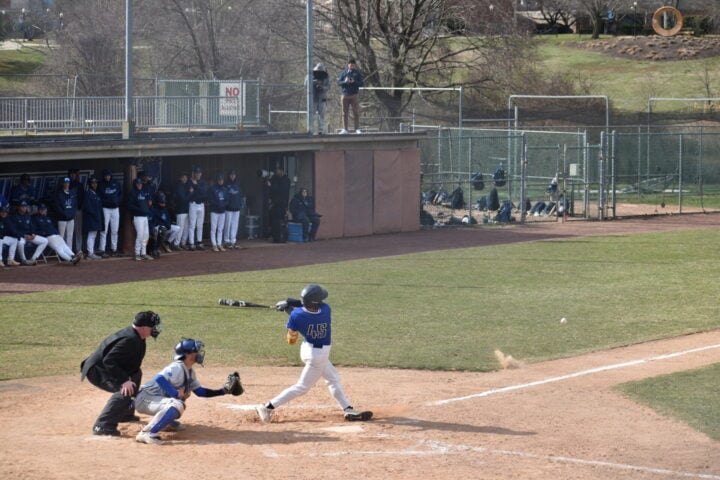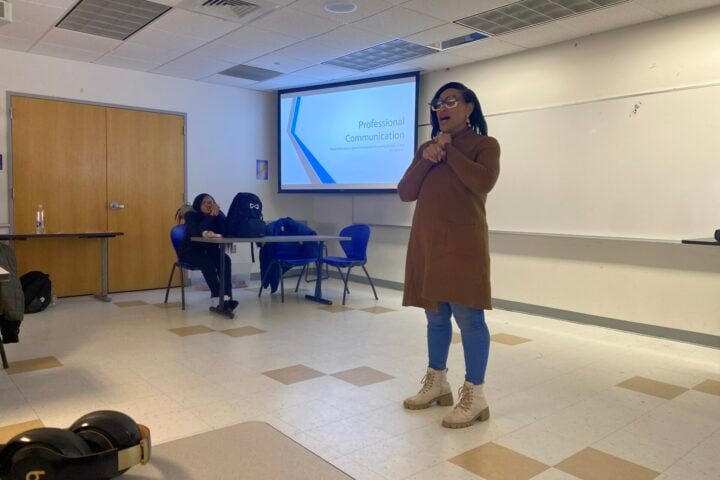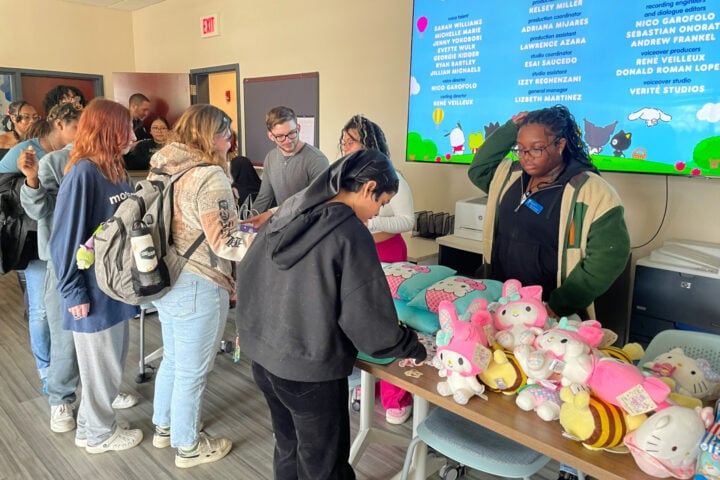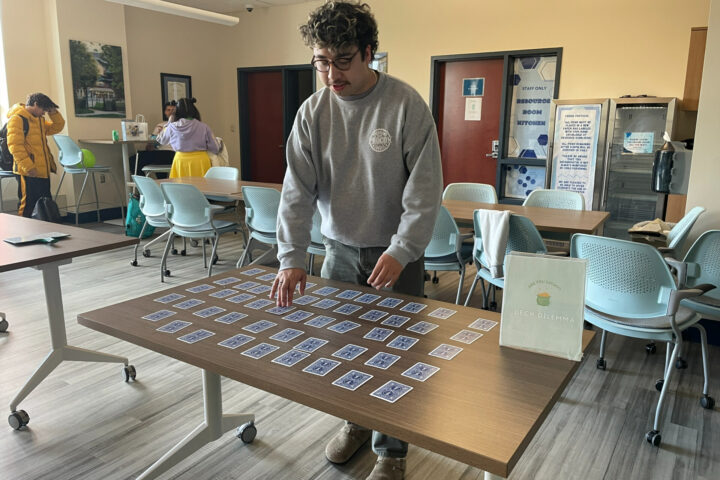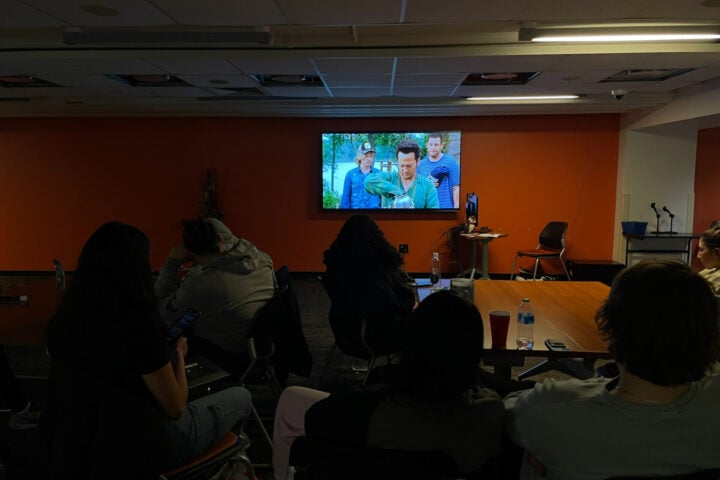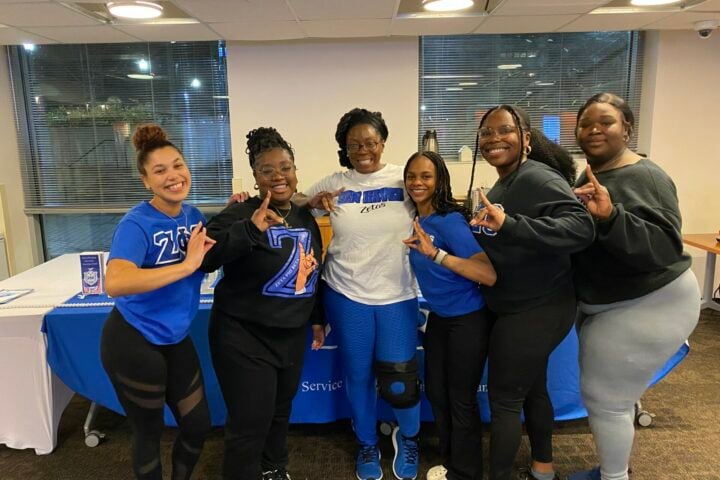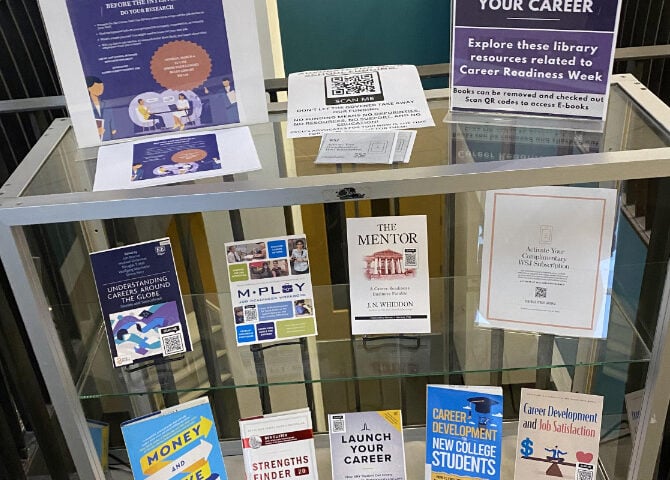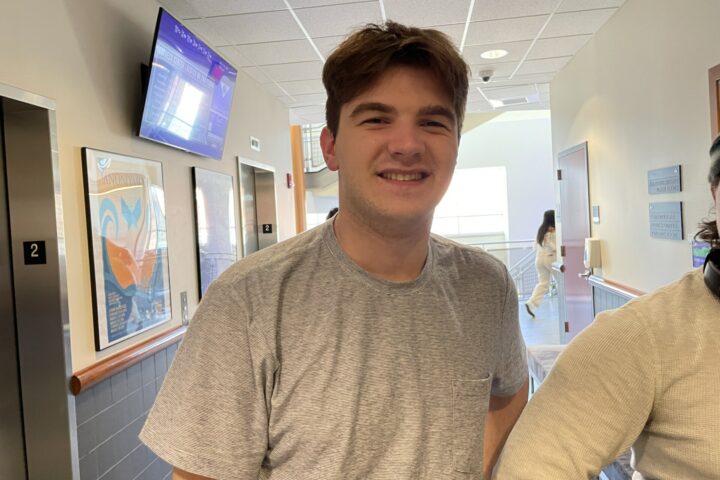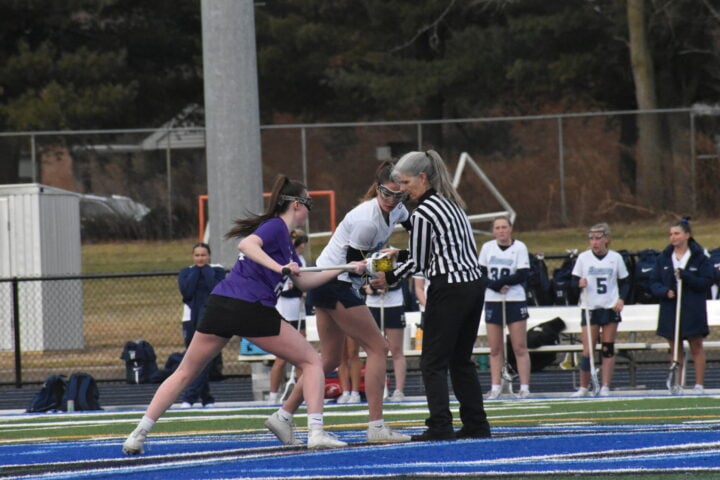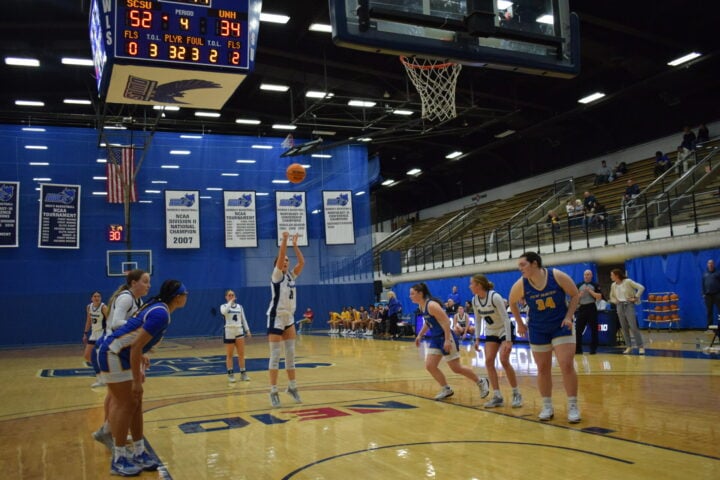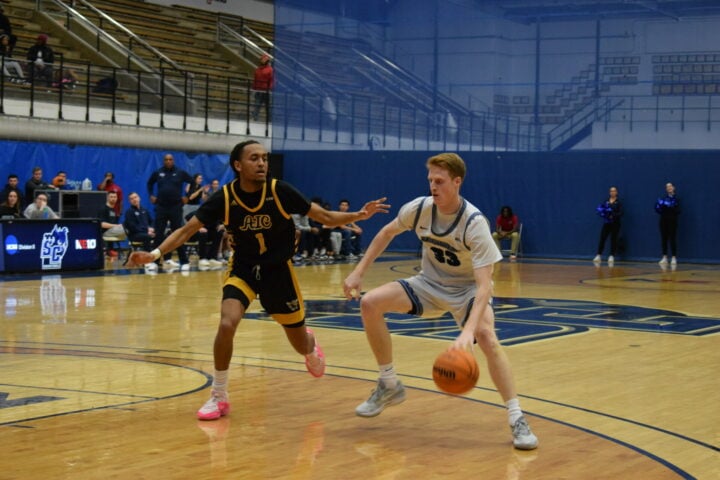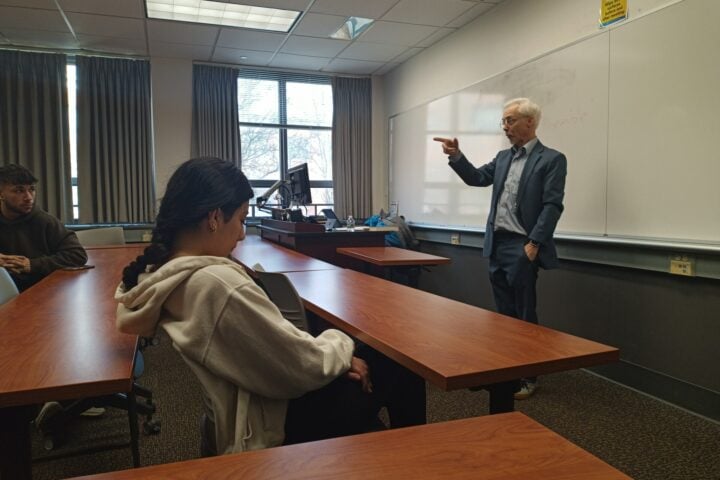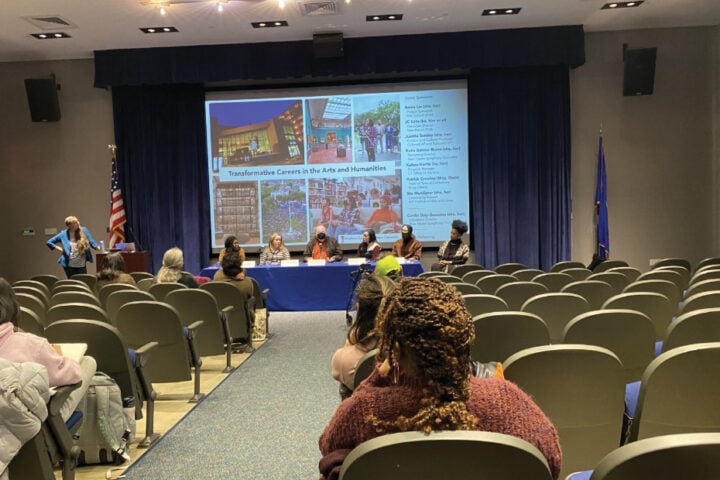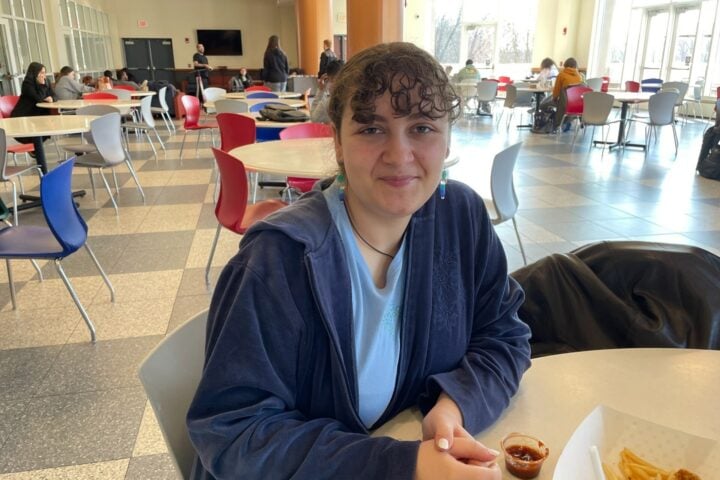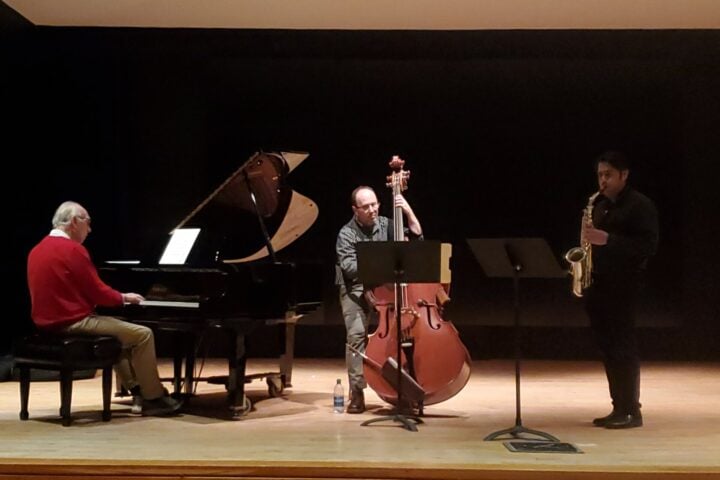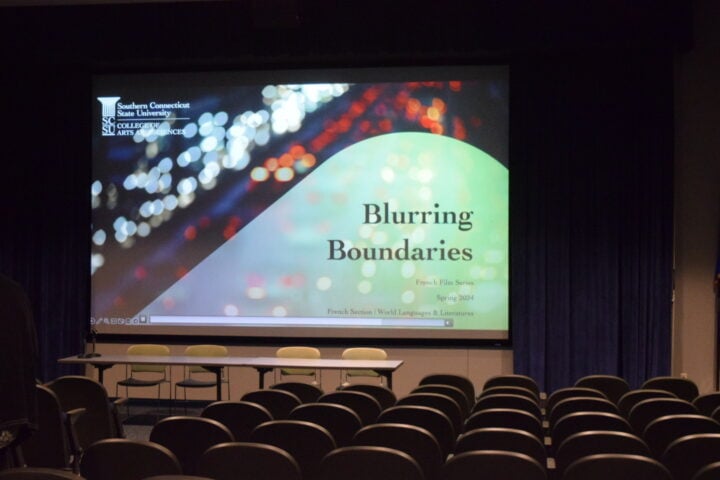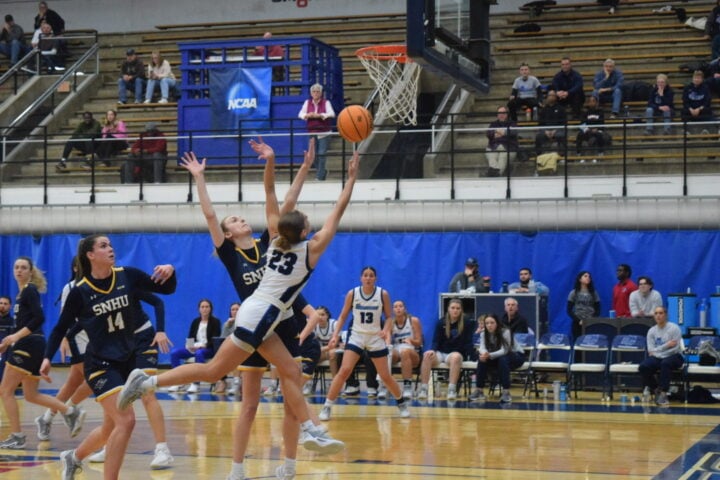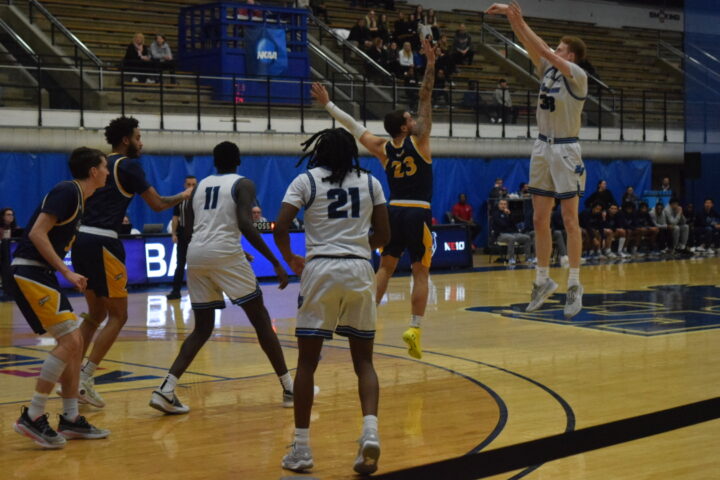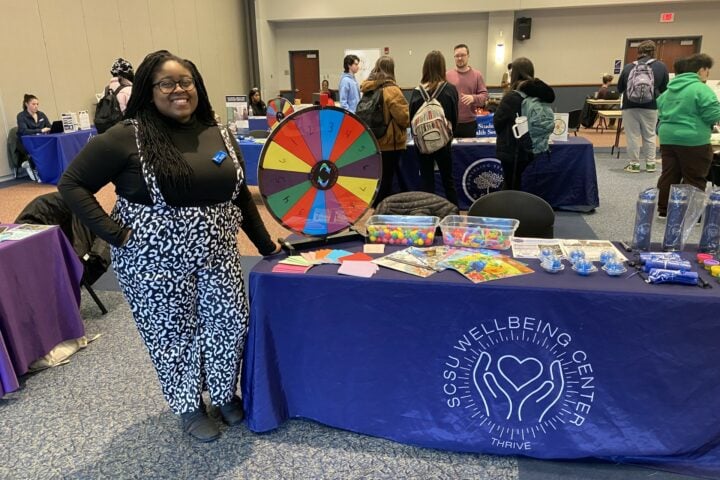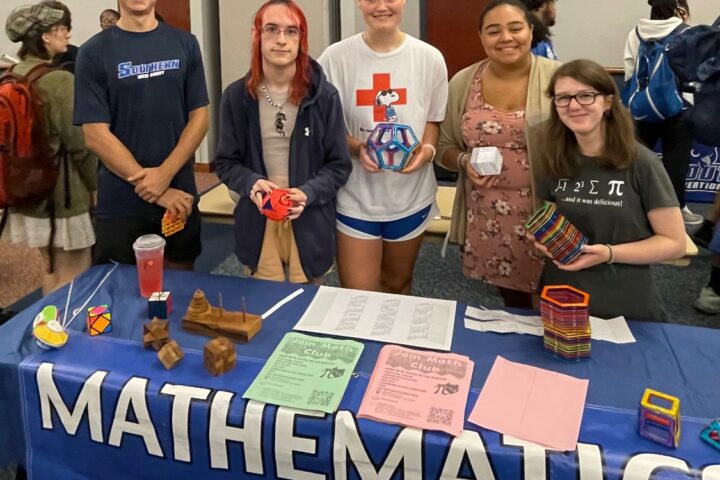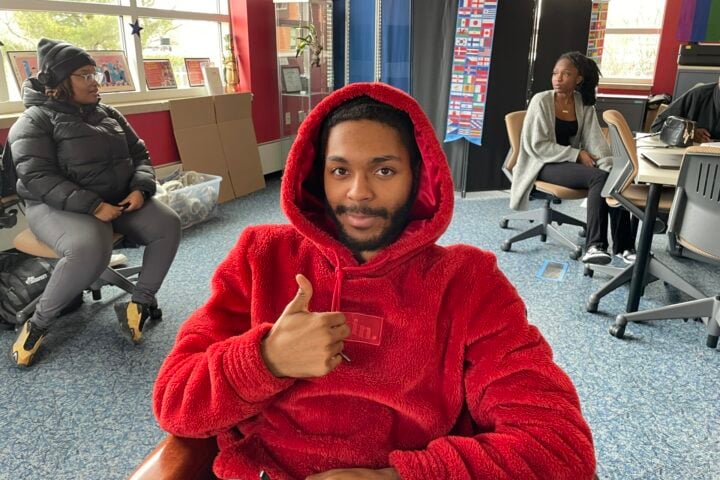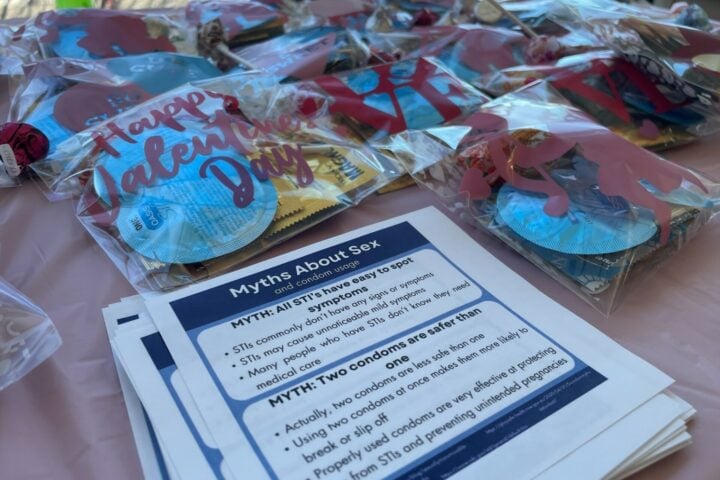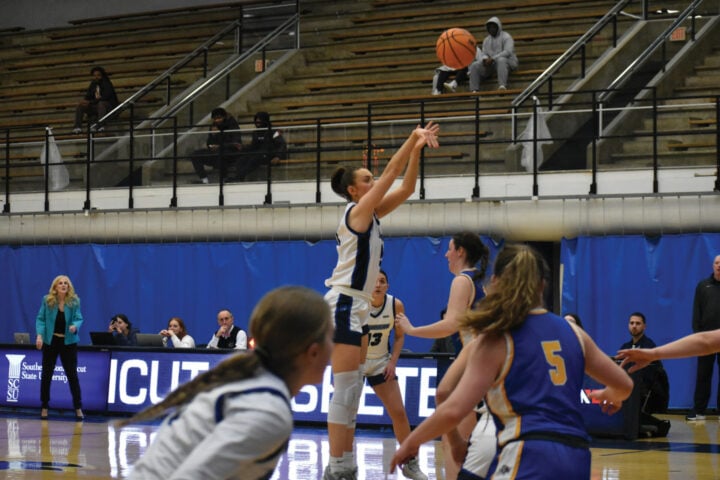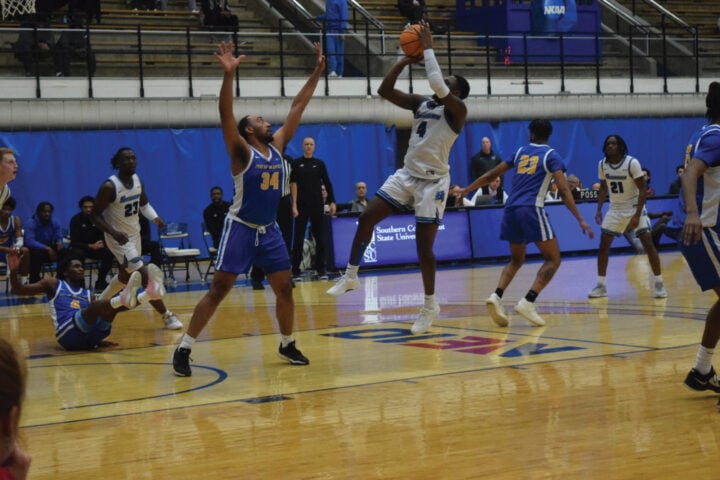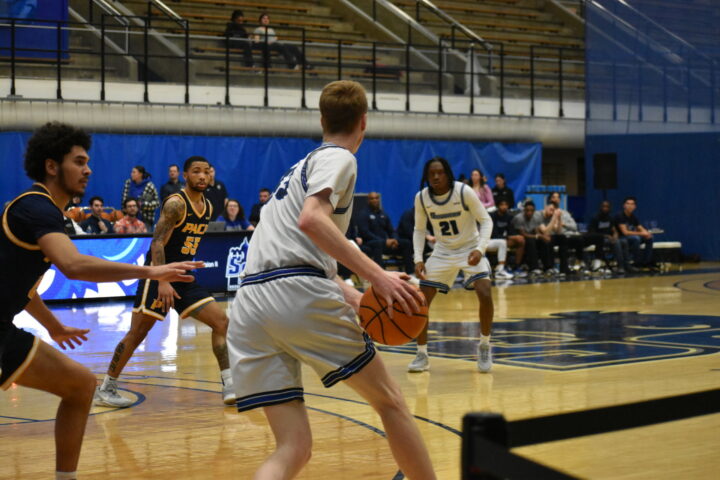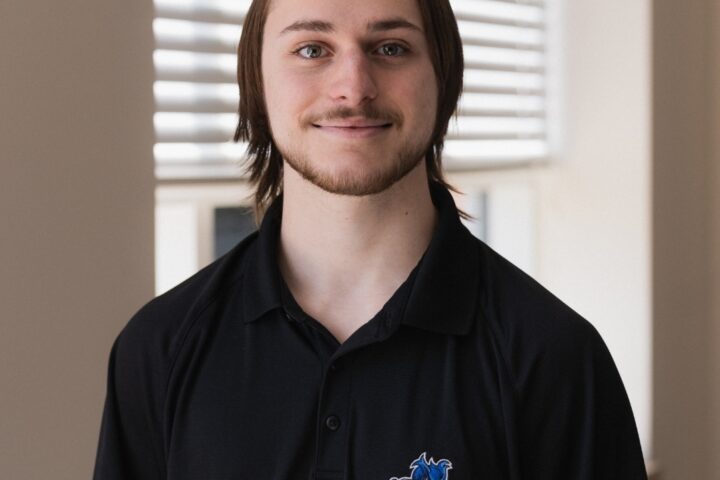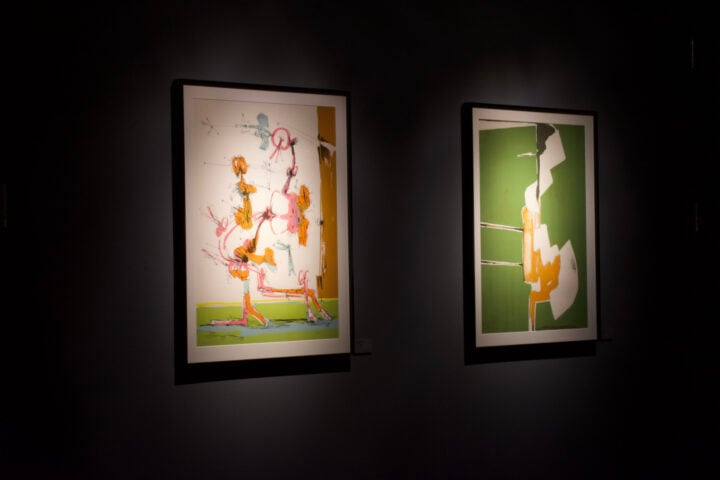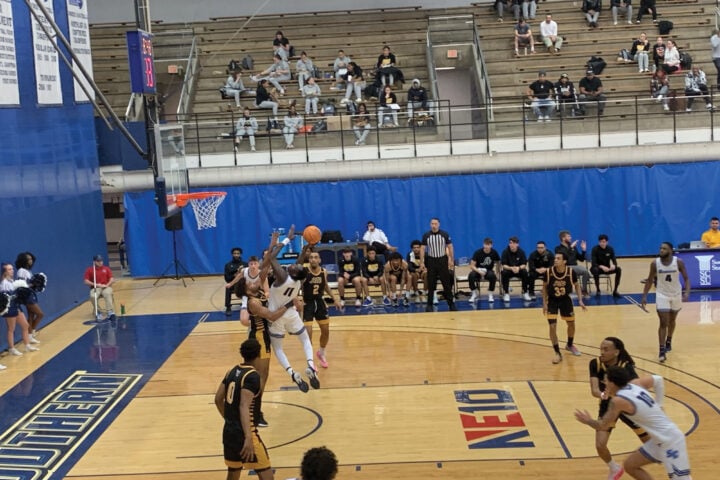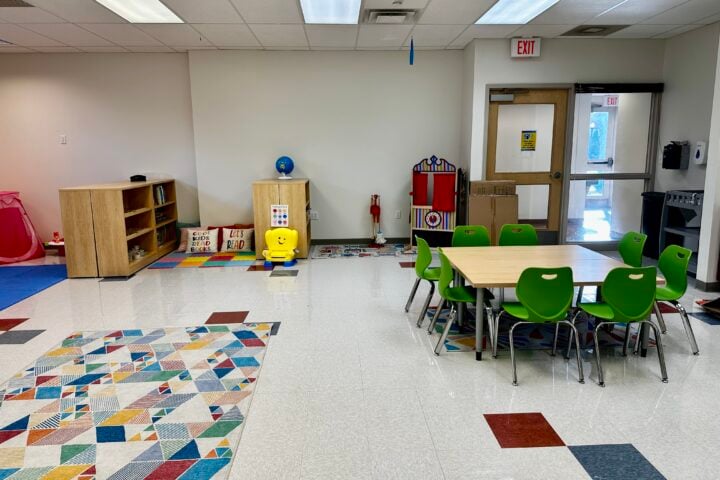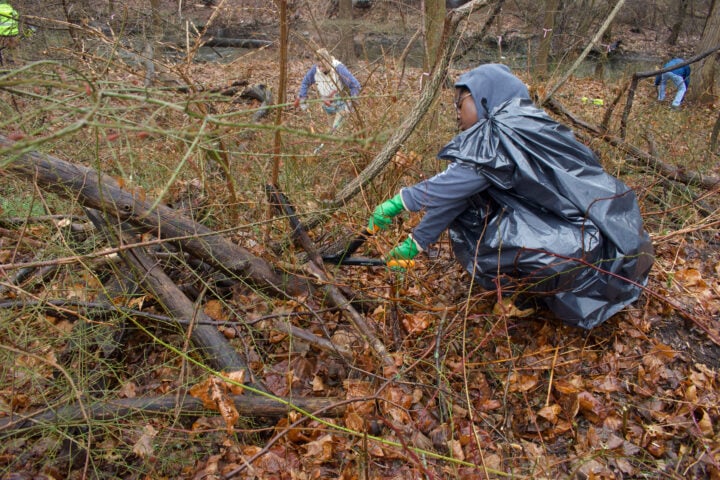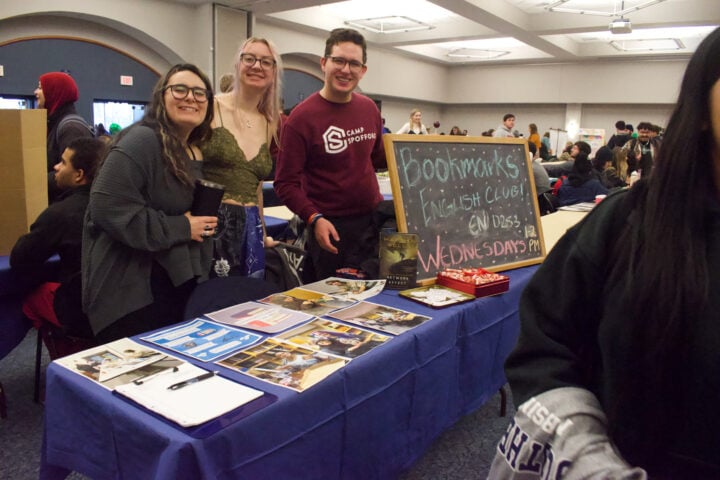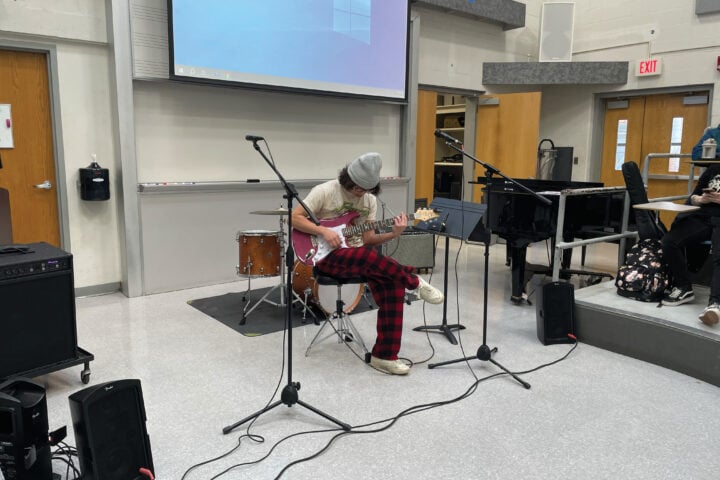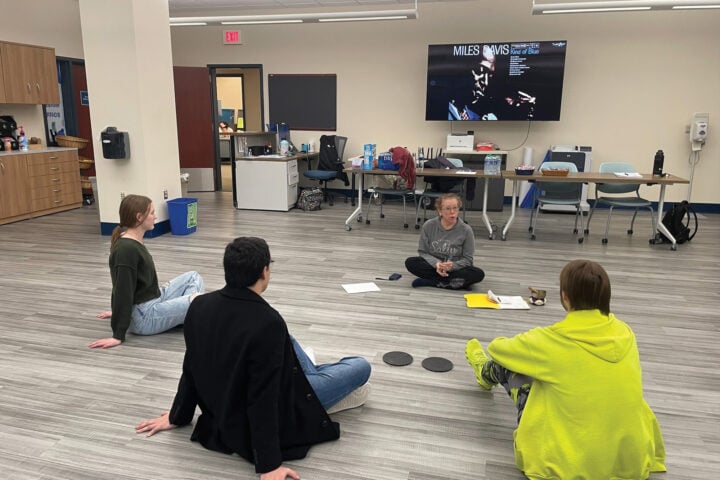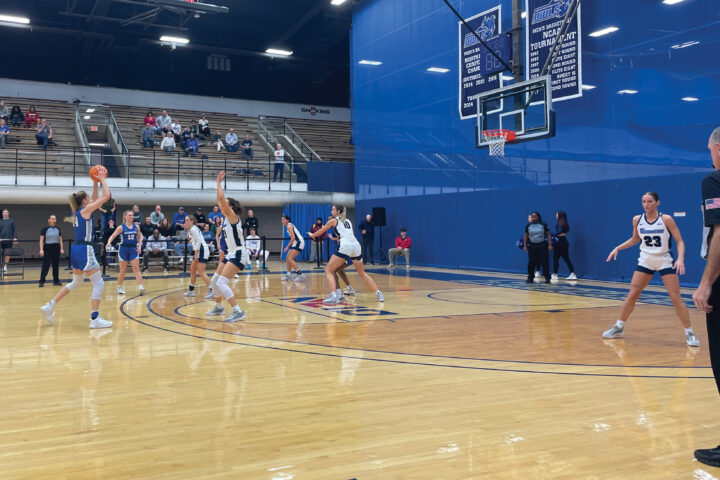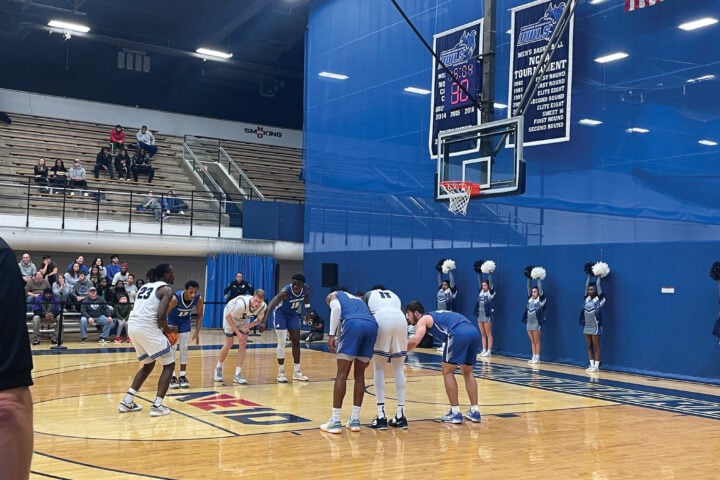Michael Simeoli (on the left) monitors Ammar Abu-Sieth’s (on the right) test results.
Aaron Berkowitz – General Assignment Reporter
Southern’s human performance lab acquired a high quality treadmill with state bond money, that uses cameras to provide a three-dimensional Gait analysis on runners.
The piece of equipment was purchased last year and cost the university about $95,000. The cameras that the machine requires ran the university another $20,000.
“This is all cutting edge equipment that you would find in top of the line research labs throughout the country,” said Assistant Professor in exercise science, Robert Gregory.
The goal of this testing is not to treat injuries, but to prevent them altogether, said Gregory.
“Right now we are testing individuals preferably who don’t have injuries,” said Gregory. “Our database is really only setup to look at healthy-ish people. If you have an injury that you’re trying to work through, that will affect your Gait parameters that we’re measuring.”
Gregory said the reason for only collecting data on “healthy-ish” subjects at the moment is so they have data to compare what they collect from injured subjects later. The type of running a subject does can also affect the data that is collected; Gregory’s focus as of late has been on long distance runners.
It is $25 for SCSU students, $75 for staff/faculty who want to be tested but do not qualify and $150 for anyone in the general public.
Since the purchase has been made, Gregory and graduate student Michael Simeoli have been working on getting it up and running by testing 15 subjects.
Ammar Abu-Sitteh, UCONN actuarial science major, said he was anxious to be tested and get his results back.
“There was a lot more setting up than actual running,” said Abu-Sitteh. “I love the idea behind understanding your running style to reduce the chances of being injured. This piece of equipment will definitely be useful to the university and who ever gets tested.”
Simeoli said he jumped on the opportunity to work on this new study.
“This is something that really interests me, I used to do some running myself until I had an ACL injury,” said Simeoli. “I ultimately want to learn about how we can use the data we collect from our analyses to prevent people from getting hurt in the future by correcting their mechanics and in the meantime put them into a rehabilitation program.”
The testing begins with markers being attached to the subject’s knee, ankle, and hip joints. These markers are used to monitor the movement in each of the joints.
To someone who isn’t familiar with this type of testing, might recognize that the same cameras and reflective markers concept is used in the making of most animated video games produced by EA Sports for capturing accurate human body movements.
Gregory’s hopes are that these tests will further his understanding of the factors that play a role in people suffering from common running related injuries. He said he wants more people to understand as well.
“A lot of people don’t know that every step you take, the weight and stress you place on your legs is three times that,” said Gregory. “If you weigh 150 pounds than each step you take is actually weighing from 400 to 450 pounds on your joints.”
He said he would like to clarify that they are not in fact doing training for athletes, but try to provide them with insight on their mechanics.
“We can do the Gait analyses,” said Gregory, “we can find out what your strengths and weaknesses are, we can give you some exercises to improve your running mechanics but any changes made are usually made by a running coach.”
Photo Credit: Aaron Berkowitz






















